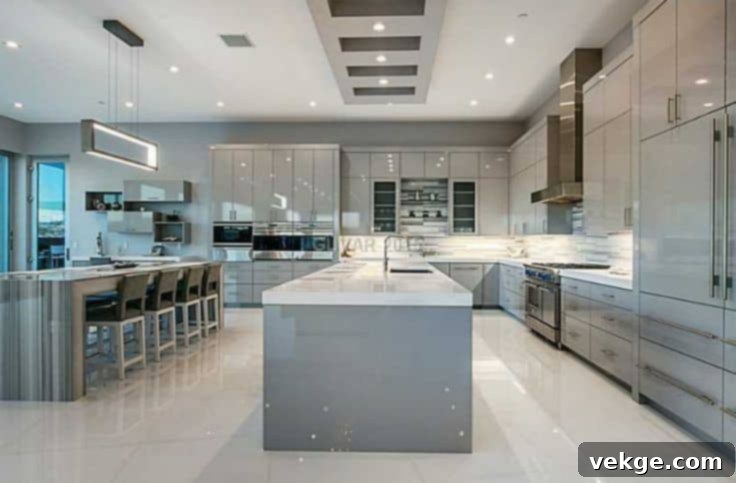Designing Your Dream Modern Modular Kitchen on a Budget: A Comprehensive Guide
The vision of a sleek, modern kitchen that captivates every guest and family member often comes with the daunting thought of an exorbitant price tag. Many homeowners dream of transforming their cooking space into a highly functional and aesthetically pleasing hub but fear their budget won’t stretch. The good news is that achieving a stunning modular kitchen design doesn’t have to be an exclusive luxury. With thoughtful planning, creative strategies, and a willingness to embrace the DIY spirit, you can bring your dream kitchen to life without draining your savings.
This comprehensive guide is designed to empower you with the knowledge and actionable tips needed to create a sophisticated and highly functional modern kitchen design, whether you’re in Horsham or anywhere else, all while staying firmly within your financial comfort zone. We’ll delve into various aspects, from material selection to space optimization, ensuring every decision contributes to both beauty and affordability. Let’s explore how to stimulate your creativity and optimize your budget expenses to achieve the kitchen you’ve always wanted.
Crafting Your Affordable Modular Kitchen: Essential Strategies
In today’s economic climate, it’s more important than ever to make smart financial decisions without compromising on quality or style. The idea of spending upwards of $50,000 on a kitchen remodel can be prohibitive for most. Fortunately, a beautiful, functional, and budget-friendly modular kitchen is well within reach. By understanding the core principles of smart design and cost-effective choices, you can achieve a sophisticated space that reflects your taste and meets your needs. Here are the essential tips and ideas to guide you.
1. Select the Perfect Elements for Your Modular Kitchen Thoughtfully
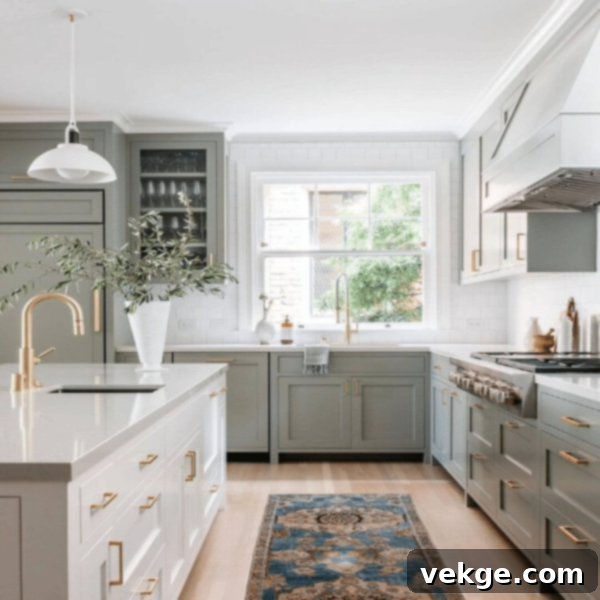
One of the most critical steps in designing an affordable modular kitchen is carefully selecting each component. Modular kitchens are renowned for their pre-made cabinets and standardized units that seamlessly fit together, maximizing functionality and space utilization. However, not all modular elements are created equal in terms of cost or impact.
When making your choices, focus on aspects that offer both style and practicality without unnecessary extravagance. For instance, cabinet shutters come in a vast array of finishes and materials. Opting for clean, modern designs in budget-friendly laminates or thermofoil can provide a sophisticated look at a fraction of the cost of solid wood. Simple yet elegant knobs, handles, and hinges can elevate the overall aesthetic without breaking the bank. Floating wall cabinets, while trendy, can sometimes be pricier; consider a mix of open shelving and standard wall cabinets for a balanced look and cost. Basic, reliable hardware will perform just as well as designer alternatives and often lasts just as long.
Furthermore, evaluate your appliance needs. Do you truly require the latest high-tech oven with multiple smart features, or will a reliable, mid-range model suffice? Ovens, chimneys, and dishwashers are significant investments. Research energy-efficient models that offer essential functions rather than luxury add-ons. Prioritizing core functionality and durability in these key elements will significantly help moderate your overall expenses for a truly modern and efficient kitchen design.
2. Choose Materials Wisely for Durability and Aesthetics
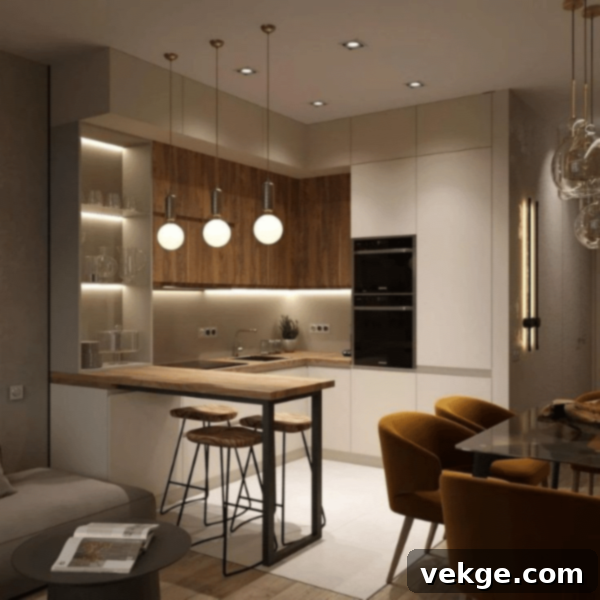
The materials you select for your modern kitchen components – countertops, shelves, and cabinets – play a pivotal role in both the overall cost and the longevity of your space. A common misconception is that opting for the cheapest materials is the best way to save money. However, this often backfires, leading to higher repair or replacement costs down the line. It’s crucial to strike a balance between affordability and durability.
Cabinetry Materials:
- Laminates: These are an excellent choice for cabinet doors and finishes. Available in an extensive range of colors, patterns, and textures, laminates like HPL (High-Pressure Laminate) or decorative laminates offer durability, ease of cleaning, and resistance to scratches and moisture at a budget-friendly price point. They are ideal for achieving a contemporary look.
- MDF (Medium-Density Fiberboard): While not as robust as plywood, MDF is more affordable and offers a smooth surface perfect for painting or laminating. It’s stable and resistant to warping, making it a good option for cabinet boxes or painted doors.
- Particle Board: The most economical option, often used for internal cabinet components. While it’s budget-friendly, it’s less durable than MDF or plywood and more susceptible to moisture damage. Ensure edges are well-sealed.
Countertops:
- Ceramic Tiles: A highly versatile and cost-effective option. Ceramic tiles come in countless colors and patterns, allowing for creative designs. They are durable, heat-resistant, and easy to clean, although grout lines require regular maintenance.
- Granite (Entry-Level): While high-end granite can be expensive, specific varieties are surprisingly affordable. Look for common colors or remnants, which can significantly reduce costs. Granite offers exceptional durability, heat resistance, and adds a touch of natural luxury.
- Laminate Countertops: Modern laminate countertops have come a long way. They mimic the look of more expensive materials like granite or wood, are easy to install, and are very budget-friendly. They are resistant to stains and easy to clean, though less heat and scratch-resistant than stone.
- Butcher Block: Offers warmth and a classic look. While it requires regular oiling and maintenance, it can be a relatively inexpensive option, especially if you source specific wood types or DIY the installation.
Flooring:
- Vitrified Tiles: An excellent choice for kitchen flooring due to their durability, low porosity, and ease of cleaning. They offer a polished, modern look and come in various finishes that can mimic stone or wood at a lower cost.
- Ceramic Tiles: Similar to countertops, ceramic floor tiles are affordable, durable, and come in a wide range of designs.
- Vinyl or Linoleum: These resilient flooring options are incredibly budget-friendly, water-resistant, and comfortable underfoot. Modern vinyl planks or sheets can convincingly replicate wood or stone and are very easy to install and maintain.
By making informed choices about materials, focusing on quality within your budget, and considering the long-term implications, you can create a beautiful and enduring kitchen without overspending.
3. Embrace DIY Projects to Save Significantly on Labor Costs
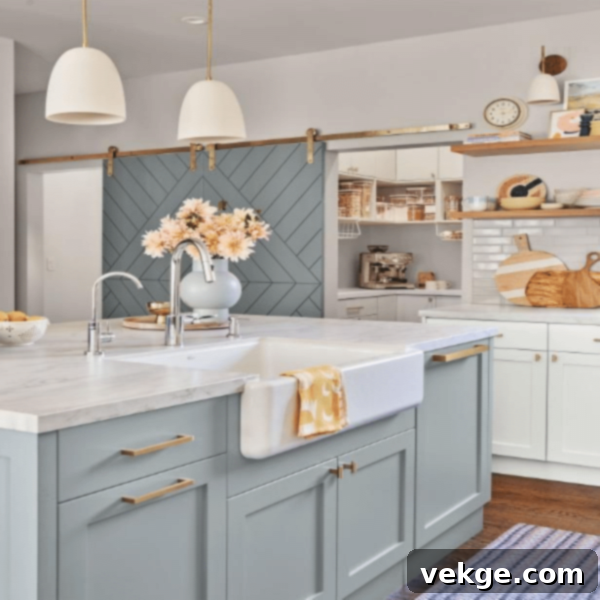
One of the most effective ways to liberate your budget for a modern kitchen transformation is to take on certain tasks yourself. DIY projects not only save on expensive labor charges but also infuse your kitchen with a unique, personal touch. However, it’s crucial to be realistic about your skills and comfort level.
Accessible DIY Projects:
- Painting: A fresh coat of paint can dramatically alter the look and feel of your kitchen. Whether it’s the walls, existing cabinets (with proper prep work), or even a creative accent wall, painting is a rewarding and relatively simple DIY task that can be a fun family project.
- Hardware Upgrades: Changing cabinet knobs, pulls, and hinges can instantly update your kitchen’s style. This is a simple, inexpensive fix that can make old cabinets look new again.
- Simple Backsplash Installation: For those with a bit of patience, installing a peel-and-stick tile backsplash or even traditional subway tiles can be a manageable DIY. There are many online tutorials available to guide you through the process.
- Assembling Flat-Pack Cabinets: If you’re purchasing modular units, many come in flat-pack form. Assembling these yourself can save a significant portion of installation costs.
- Floating Shelves: Installing floating shelves is an excellent way to add open storage and display space. It requires basic tools and some measuring precision but is generally straightforward.
- Small Decor & Organization: Creating custom drawer dividers, repurposing old furniture for a kitchen island, or making your own decorative elements adds character at minimal cost.
For more complex tasks like intricate plumbing, electrical work, or custom carpentry, it’s often wise to leave it to certified professionals. Attempting these without adequate skills can lead to costly mistakes, safety hazards, or subpar results that undermine your overall design. Knowing when to call in experts for specific parts of the project, while tackling simpler tasks yourself, is the ultimate budget-saving strategy.
4. Understand and Prioritize Your Kitchen’s Specific Needs
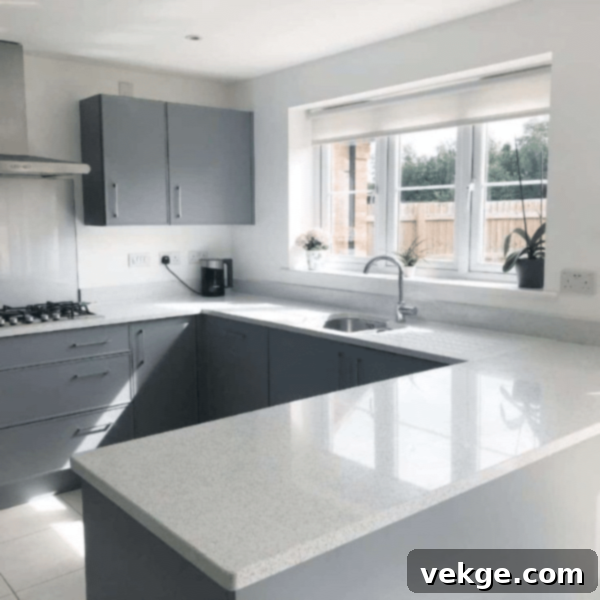
Every household has unique requirements for its kitchen, stemming from lifestyle, cooking habits, and the available space. Before embarking on any design decisions, take the time to deeply understand what your tailor-made modern kitchen truly needs within your budget and spatial constraints.
Analyze Your Space and Layout:
- Kitchen Layouts: The existing architecture of your home will often dictate the most efficient and cost-effective modular kitchen layout.
- L-shaped: Ideal for smaller to medium-sized kitchens, it offers continuous counter space and an efficient work triangle.
- U-shaped: Provides the most counter and storage space, perfect for larger families or those who love to cook.
- Parallel (Galley): Highly efficient for narrow spaces, with two parallel countertops.
- Straight/Single-Wall: Best for very small spaces or open-plan living, keeping all functions on one wall.
Sticking to a layout that naturally fits your space will reduce complex structural changes, which are often expensive.
Evaluate Your Cooking Style and Habits:
- Frequency of Cooking: Do you cook elaborate meals daily, or are you more of a microwave and takeout person? This dictates the need for high-end appliances, extensive counter space, and specialized storage.
- Entertaining: If you frequently host guests, you might prioritize a larger island for social interaction, more serving space, and perhaps a dedicated bar area.
- Special Appliances: Are you an avid baker requiring a dedicated mixer station and ample counter space, or do you need a specific spot for an air fryer, coffee machine, or microwave? Plan for these essential items from the outset.
- Storage Needs: How many pots, pans, dishes, and pantry items do you typically keep? This directly impacts the number and type of cabinets and drawers you’ll require.
By thoroughly assessing these factors, you can create a kitchen that is not only visually appealing but also perfectly optimized for your lifestyle, ensuring every dollar spent contributes to genuine utility and enjoyment.
5. Smart Storage Ideas for Your Low-Budget Modular Kitchen
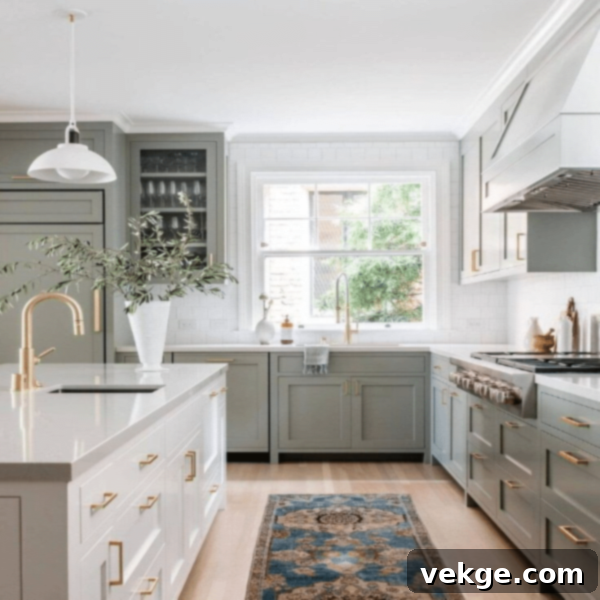
Efficient storage planning is paramount in any kitchen, but it becomes even more critical when working with a tight budget. Maximizing every inch of space without overspending on elaborate pull-outs and custom solutions requires clever strategies. Begin by taking a thorough inventory of all your existing appliances, utensils, pantry items, and other essentials. Then, consider any new items you plan to acquire for your redesigned modular kitchen.
Budget-Friendly Storage Solutions:
- Open Shelving: A highly cost-effective and versatile option, especially for smaller kitchens or U-shaped layouts. Open shelves can make a space feel larger and more airy. Use them to store daily-use items like plates, glasses, and frequently accessed spices. Just ensure they remain neat and organized to avoid a cluttered look.
- Vertical Storage: Don’t forget the vertical space! Wall-mounted pot racks, magnetic knife strips, and spice racks free up valuable drawer and cabinet space. Pegboards can also be installed on an empty wall for customizable hanging storage.
- Drawer Organizers and Dividers: These don’t have to be expensive. Simple bamboo or plastic inserts, or even DIY dividers made from cardboard or wood scraps, can transform chaotic drawers into organized spaces for cutlery, tools, and smaller items.
- Pantry Solutions: If you have a pantry, utilize stackable containers, clear bins, and tiered shelves to maximize storage density. This allows you to see everything at a glance and prevents items from getting lost.
- Under-Sink Storage: This area is often underutilized. Install a tension rod to hang spray bottles, or add small shelving units to store cleaning supplies efficiently.
- Repurposed Furniture: Consider a vintage dresser or a narrow console table that can be upcycled into an island or extra storage unit. A rolling cart can also serve as a mobile island or a designated spot for frequently used appliances.
- Utilize Cabinet Interiors: Add hooks to the inside of cabinet doors for measuring cups or dish towels. Install small racks for cutting boards or pan lids.
By strategically planning your storage, you can ensure that your kitchen remains clutter-free, functional, and efficient, all while adhering to your budget. Smart storage makes a small kitchen feel expansive and an organized kitchen a joy to cook in.
6. Harness the Power of Lighting and Aesthetics on a Budget
Beyond the fundamental structural elements and materials, the overall ambiance and visual appeal of your kitchen are significantly influenced by lighting and decorative touches. Thankfully, creating a stunning aesthetic doesn’t require a lavish budget.
Budget-Friendly Lighting Ideas:
- LED Strip Lighting: Inexpensive and easy to install, LED strips can be placed under upper cabinets to provide excellent task lighting for countertops, or along toe kicks for a modern, ambient glow.
- Affordable Pendant Lights: Look for simple, industrial-style pendant lights at home improvement stores. You can often customize them with DIY shades made from unexpected materials to add a unique touch without the designer price tag.
- Track Lighting: A versatile and cost-effective option for directional lighting, allowing you to highlight specific areas like an island or a prep zone.
- Maximize Natural Light: Keep windows unobstructed. If privacy is an issue, opt for sheer blinds or curtains that still allow light to filter through.
Aesthetic Touches That Don’t Break the Bank:
- Paint Colors: A fresh coat of paint in a carefully chosen color can completely transform the mood of your kitchen. Lighter colors can make a small space feel larger and brighter, while bolder accents can add personality.
- DIY Backsplashes: As mentioned before, peel-and-stick tiles offer incredible variety and are very DIY-friendly. Stenciling a design onto a painted wall or using simple white subway tiles (one of the most affordable tile options) can create a high-impact backsplash without the high cost.
- Open Shelving Decor: Use open shelves not just for storage but also for display. Arrange a few well-chosen decorative items like potted herbs, attractive cookbooks, or a set of aesthetically pleasing dishes to add character.
- Plants: Greenery instantly brings life and freshness to any space. Small potted plants or hanging planters are a very affordable way to add natural beauty.
- Art and Rugs: Don’t shy away from adding a framed print or a durable, washable rug to your kitchen. These elements can introduce color, texture, and personality, making the space feel more finished and inviting.
By thoughtfully integrating these lighting and aesthetic elements, your budget-friendly modular kitchen will not only be highly functional but also a beautiful reflection of your personal style.
Conclusion: Your Dream Kitchen Awaits, Affordably
Creating a modern, stylish, and highly functional kitchen on a low budget is not merely a possibility; it’s an entirely achievable reality through strategic planning, resourcefulness, and a touch of creativity. The journey to your dream kitchen doesn’t have to involve financial stress or compromise on quality. By focusing on key areas such as wise material selection, maximizing existing space, embracing the power of DIY, understanding your unique needs, and implementing smart storage solutions, you can transform your cooking space into an area you’ll love for years to come.
Remember to prioritize affordability in every design element, explore cost-effective alternatives, and confidently tackle DIY projects where your skills allow. The tips outlined in this guide provide a robust framework to help you navigate the renovation process. By following these practical strategies, you can revitalize your old kitchen into a functional, aesthetically pleasing, and highly efficient space, proving that a stunning modern kitchen can indeed be crafted without putting undue stress on your wallet.
